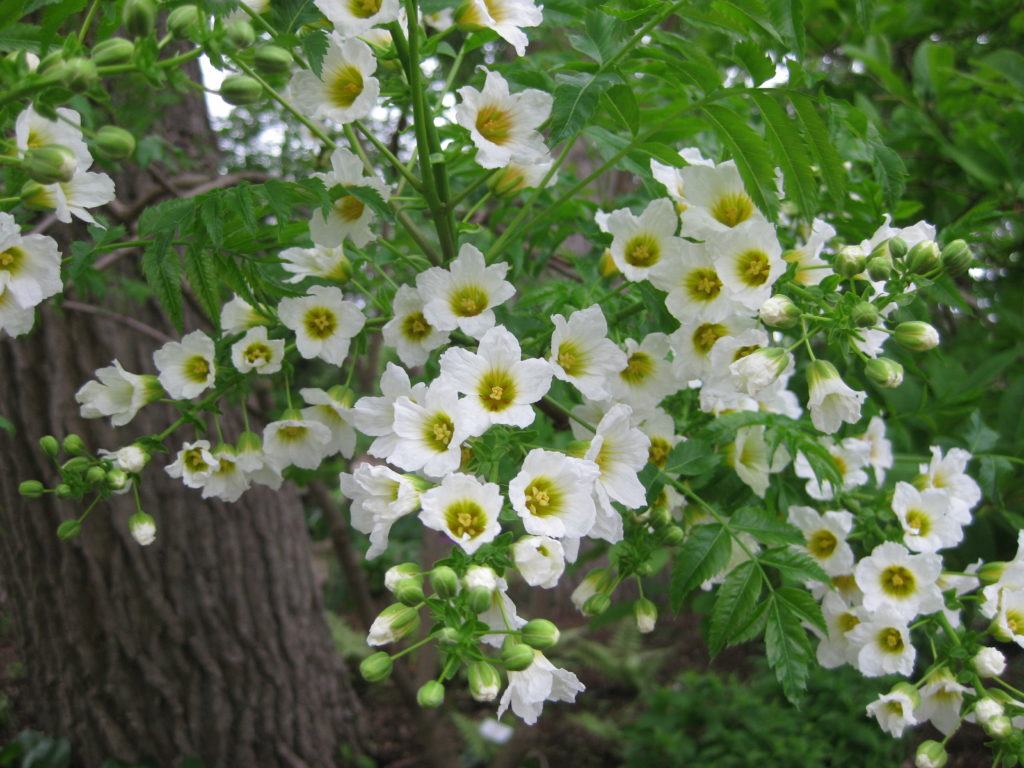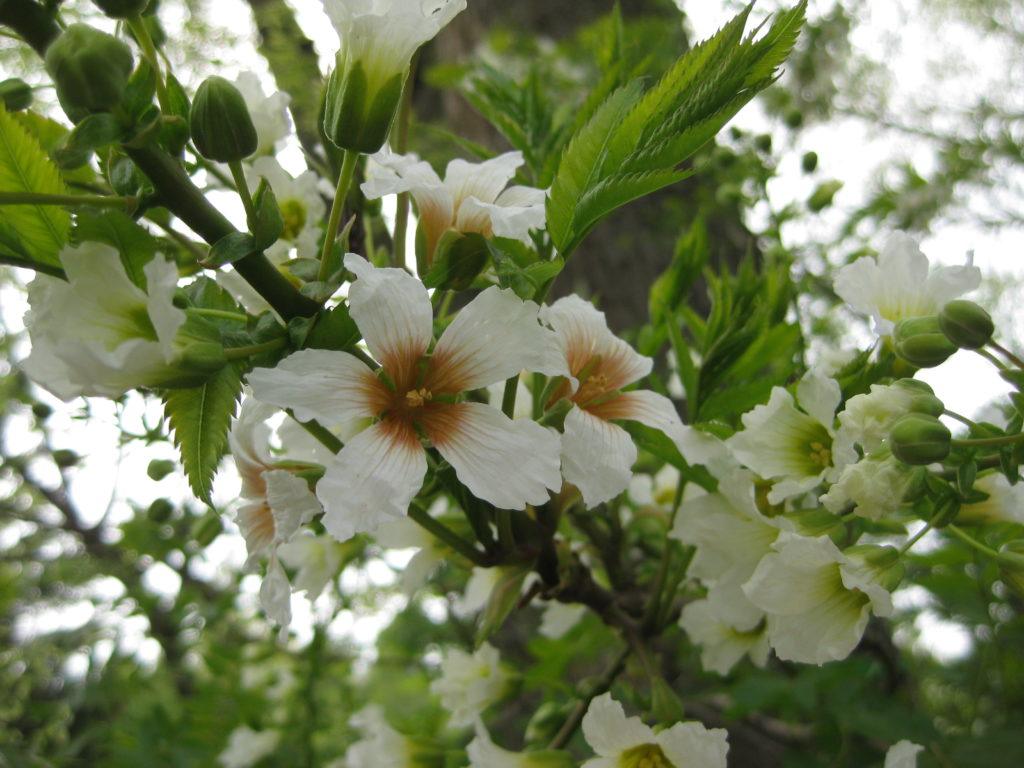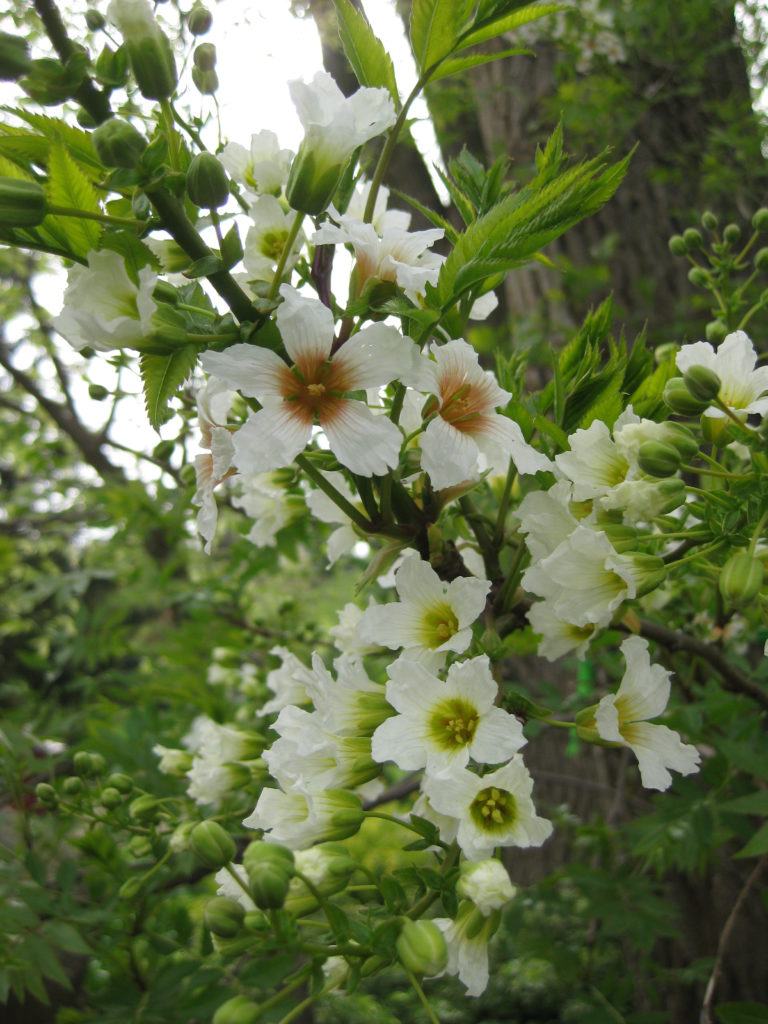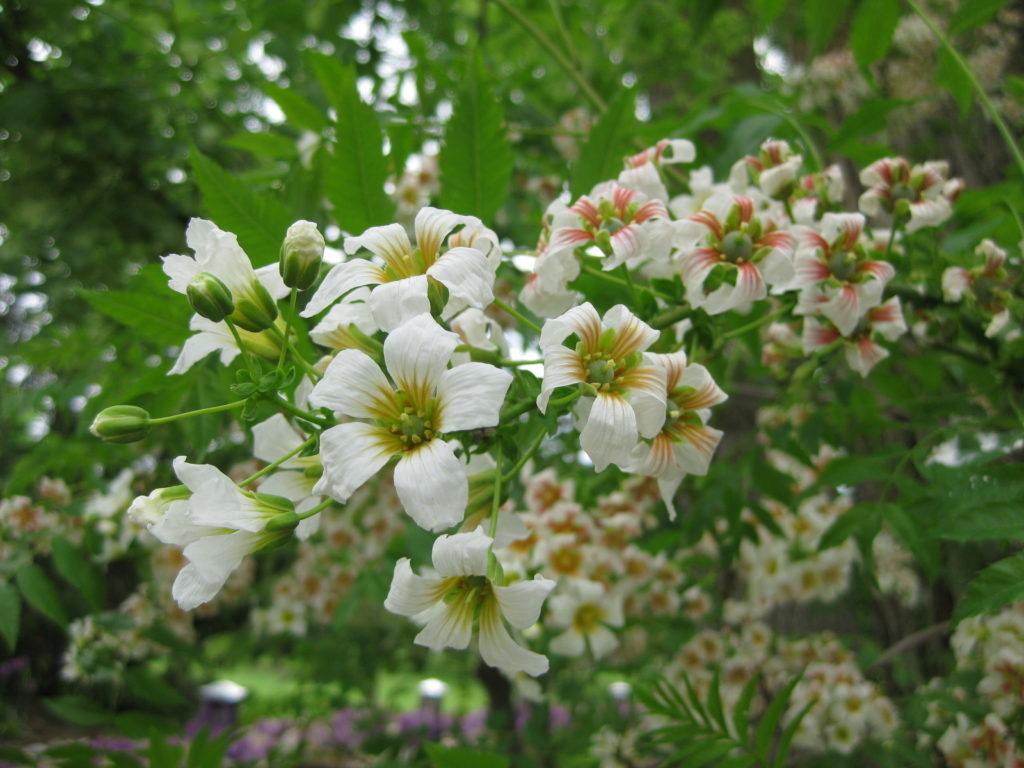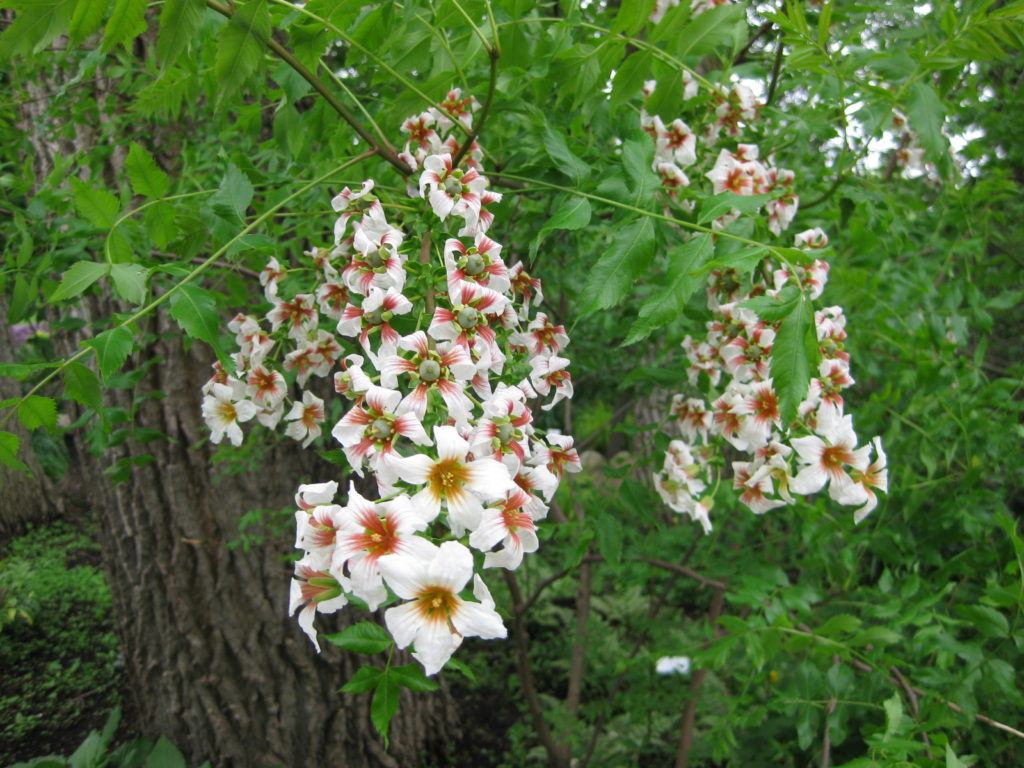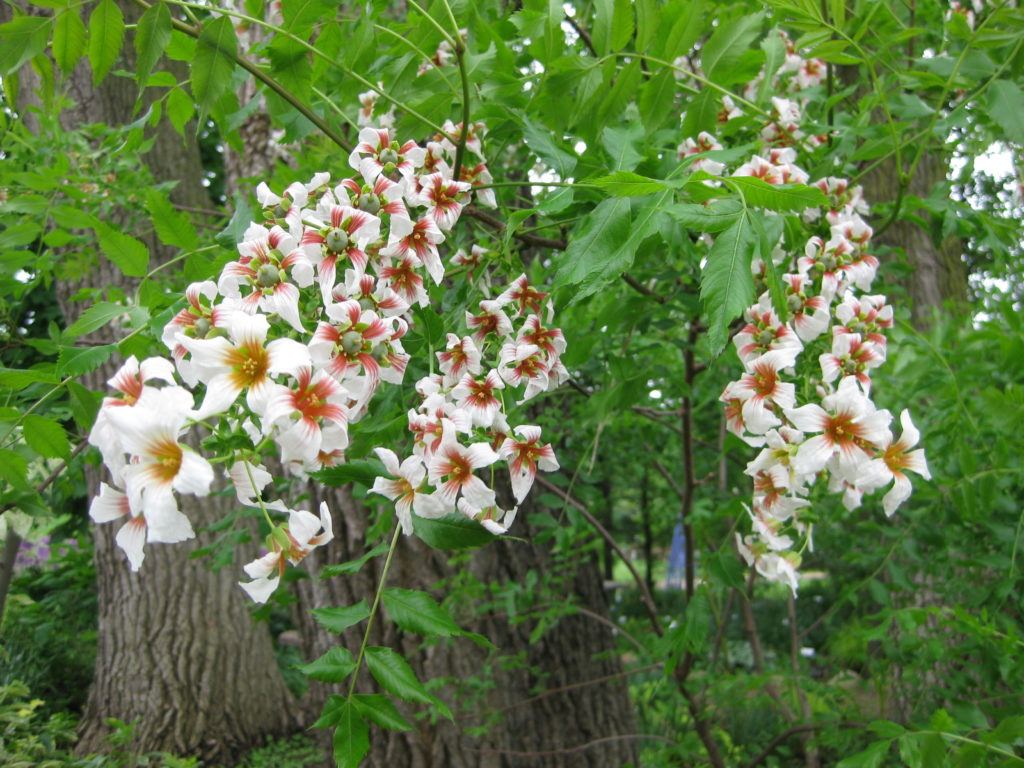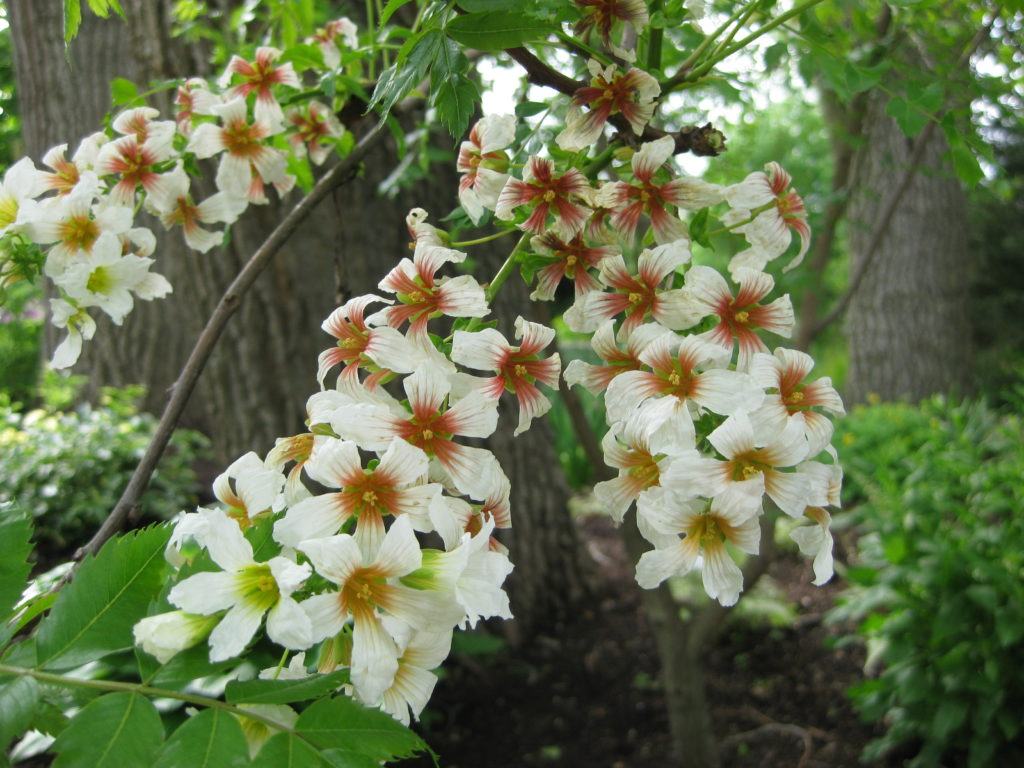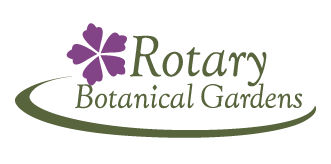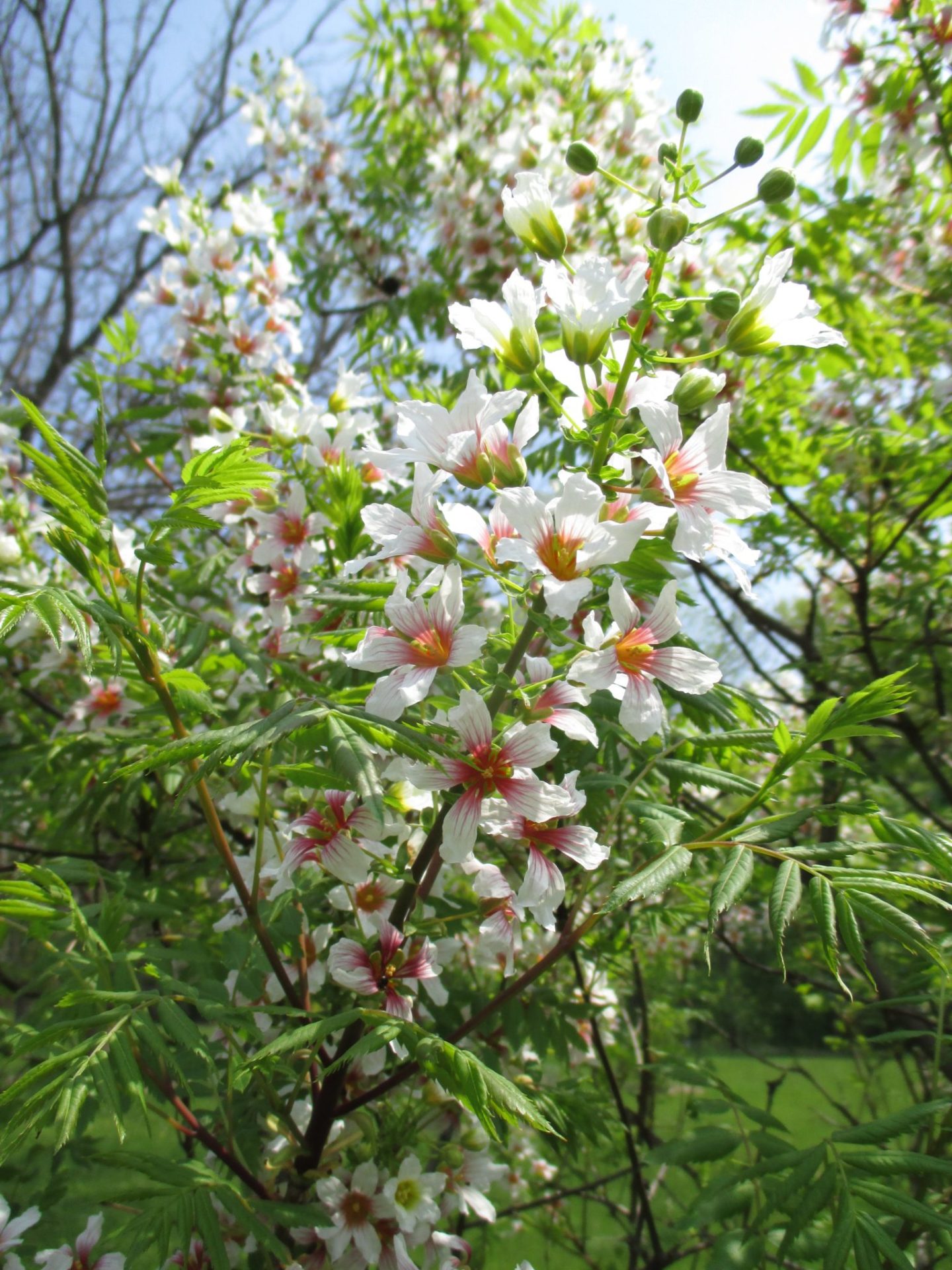
Yellowhorn – Xanthoceras sorbifolium
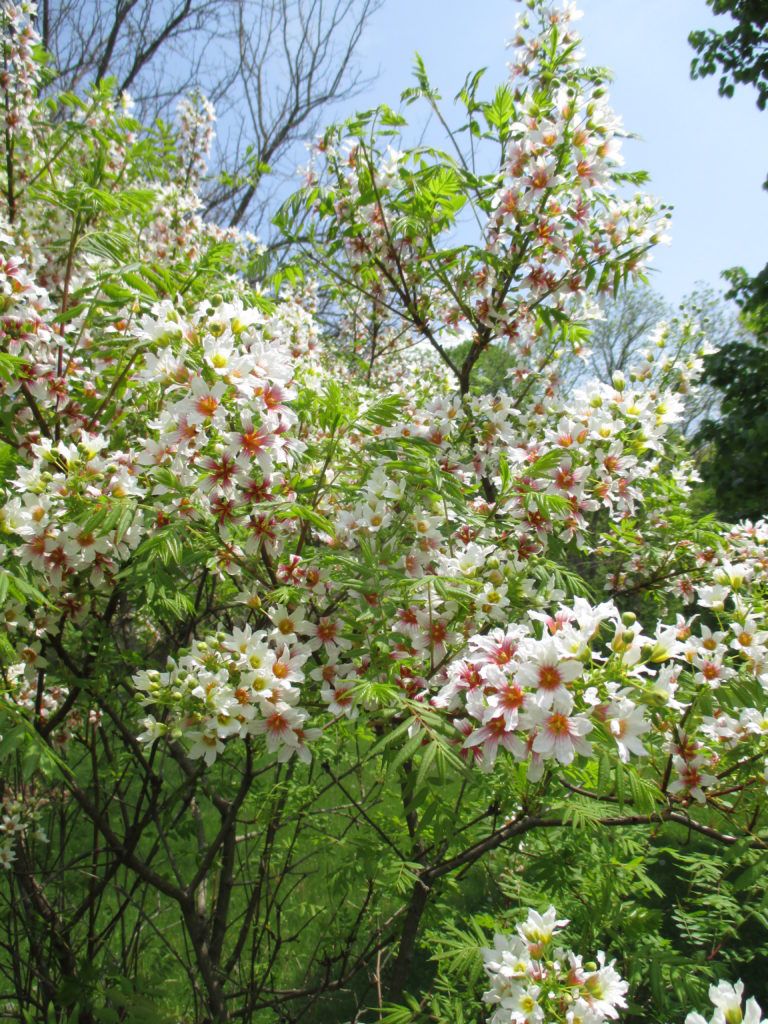
The yellowhorn (Xanthoceras sorbifolium) is surprisingly underutilized in our Midwest landscapes although it’s availability is certainly associated with its obscurity (and vice versa). Also called goldenhorn, this native of northern China is hardy in zones 4-7 and our specimen at the gardens has thrived for over 25 years. First collected in 1830, this member of the soapberry family (Sapindaceae) first became cultivated in Europe (Paris) in 1868. Joseph Hooker, Director of the Royal Botanic Gardens – Kew (1865-1885) described this plant in 1887 as “one of the most attractive and interesting hardy garden shrubs that has been introduced in many years.” Yellowhorn also received the Royal Horticultural Society Award of Garden Merit. When I started at the gardens over 20 years ago, we installed a small specimen and I’m glad we did every time I see the flowers in spring!
Reaching heights between 8′ – 25′ (ours is about 10′ tall) this woody plant fits right in between the loose definitions of a large shrub and small tree. Blooming in May, the flowers, appearing on terminal racemes, are white with very light green streaks and a center that ages from yellow on the newest flowers to a gorgeous red orange on older flowers (see photos). Flowers are roughly 1″ in diameter with five petals. The duration of bloom is only about 2 weeks but it is a gorgeous display. Our specimen in part sun blooms quite heavily but the specimen in full sun seen below at Longenecker Garden (UW-Arboretum, Madison, WI) has a heavier bloom set and more intense flower coloration (particularly the center). Yellowhorn doesn’t mind slight dampness or drought and isn’t overly picky about soil. A loamy soil, while preferred, isn’t essential for the success of this durable woody plant. The alternate, compound leaves are glossy with minimal yellowing for fall color. The fruits are 2.5″, pear-shaped, leathery capsules. I’ve only seen fruiting on our specimen once in 20 years but it may be more common in full sun. Apparently this plant has edible flowers, foliage and the seeds are commonly eaten in China. Yellowhorn is found commonly in Beijing and other urban settings. This plant has no significant insect or disease problems either. Availability is the challenge!
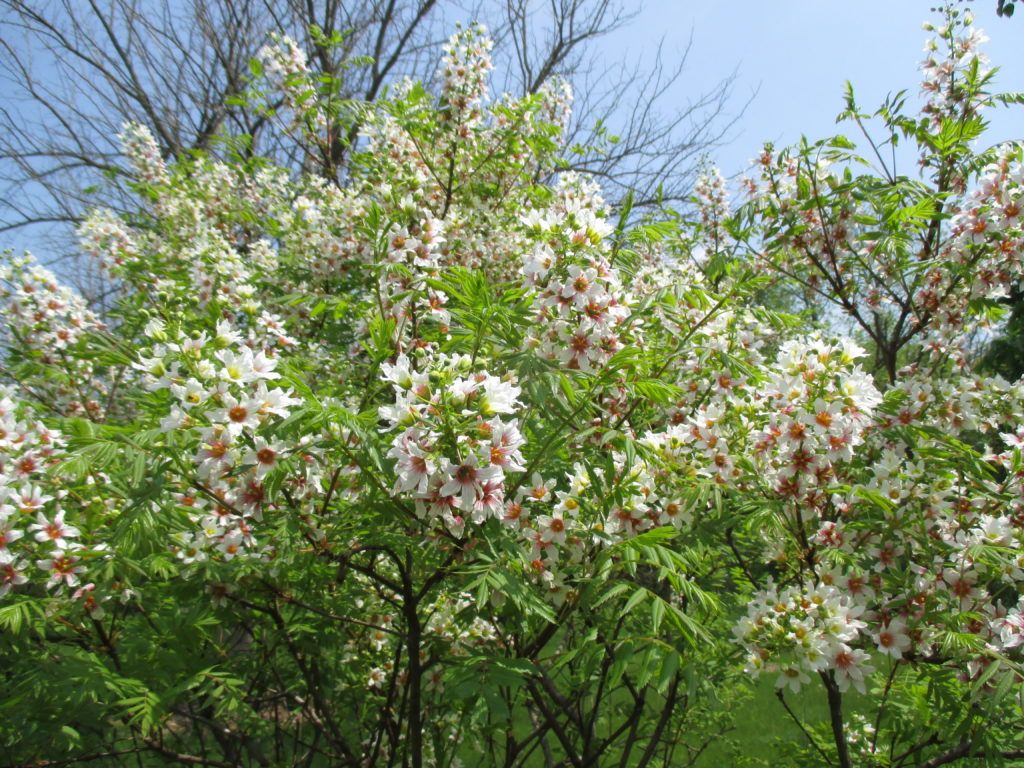
the yellowhorn (Xanthoceras sorbifolium) seen in all the photos above and four photos below is at the Longnecker Horticultural Gardens at the UW-Arboretum (Madison, Wisconsin, USA)
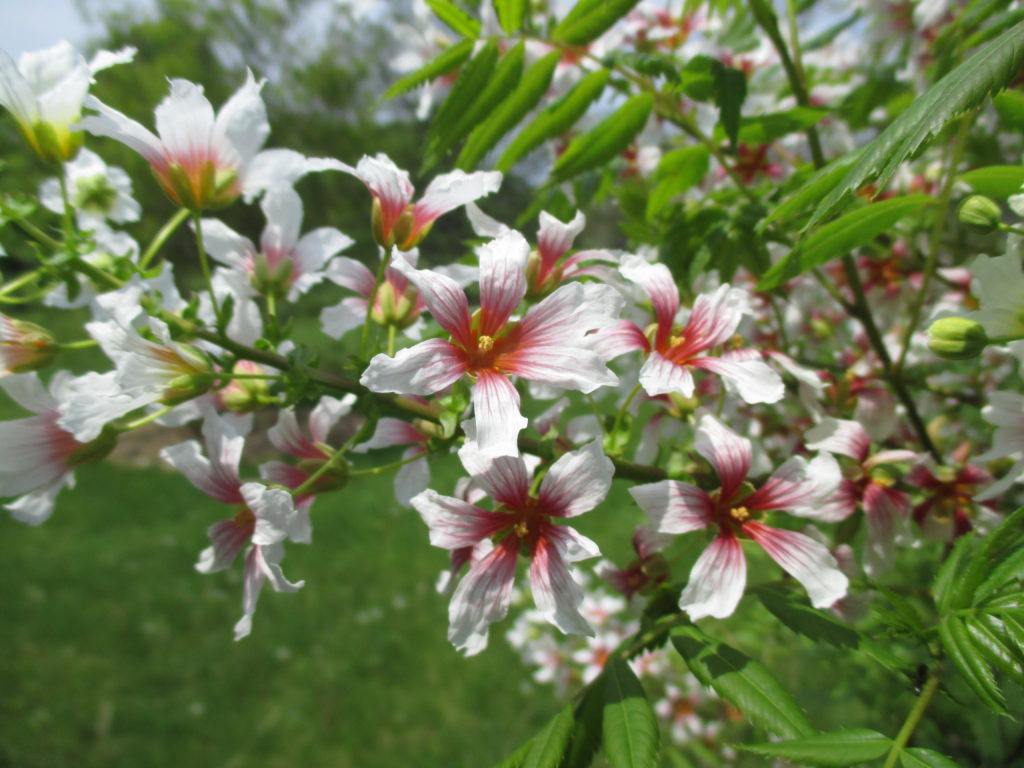
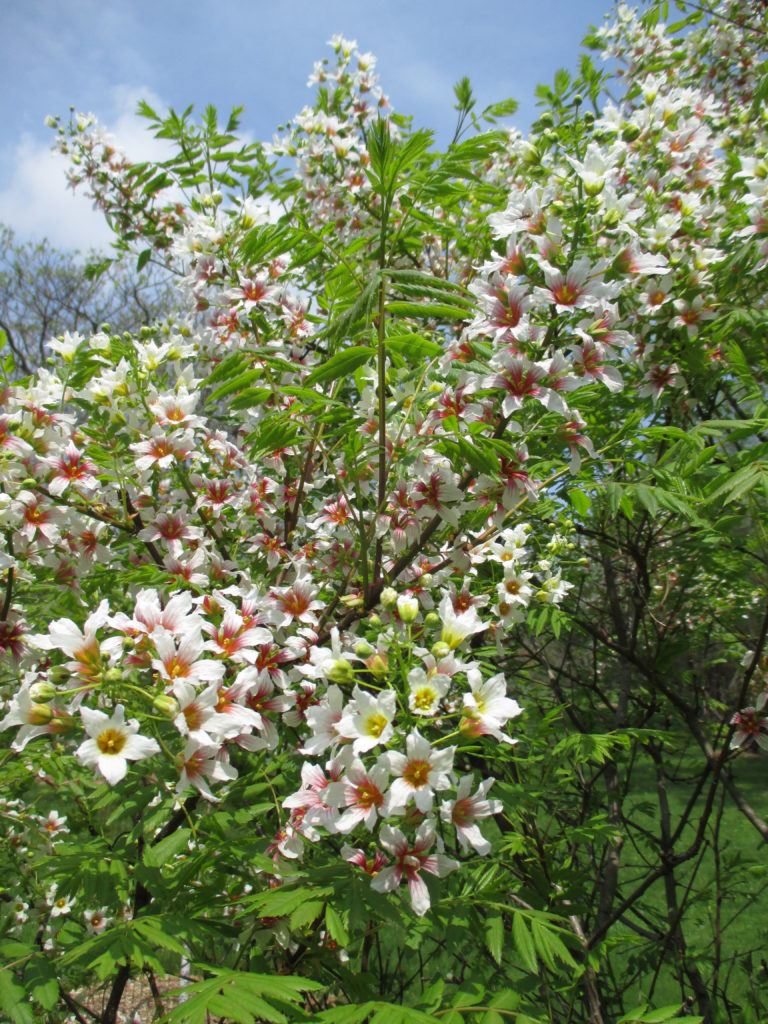
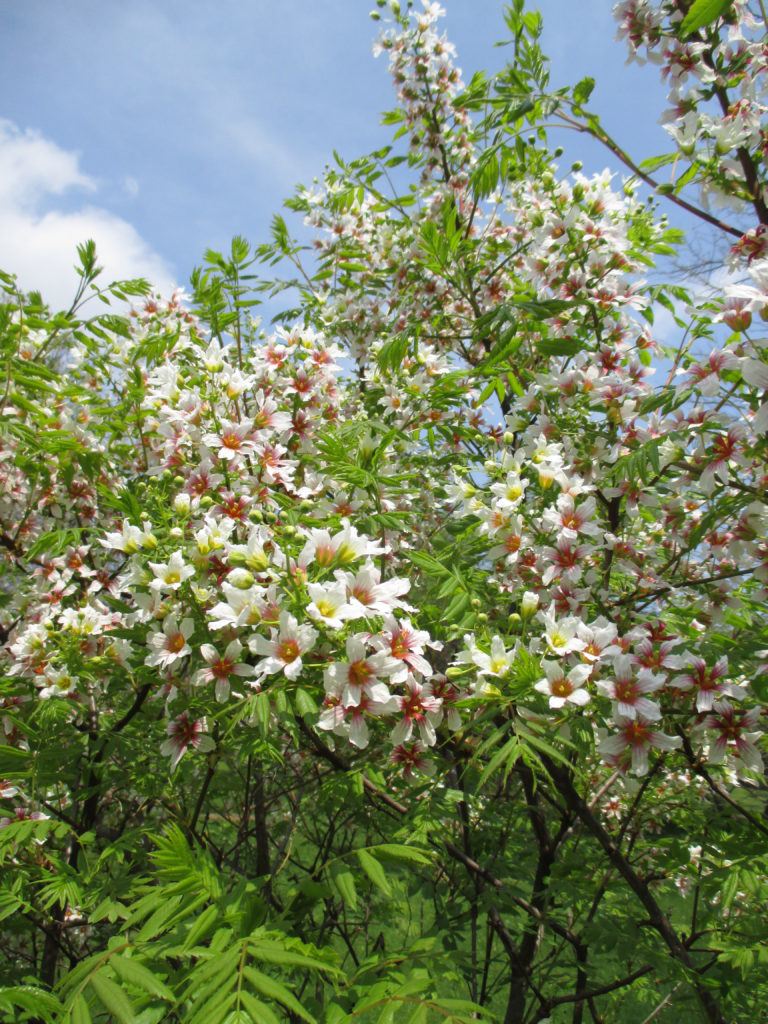
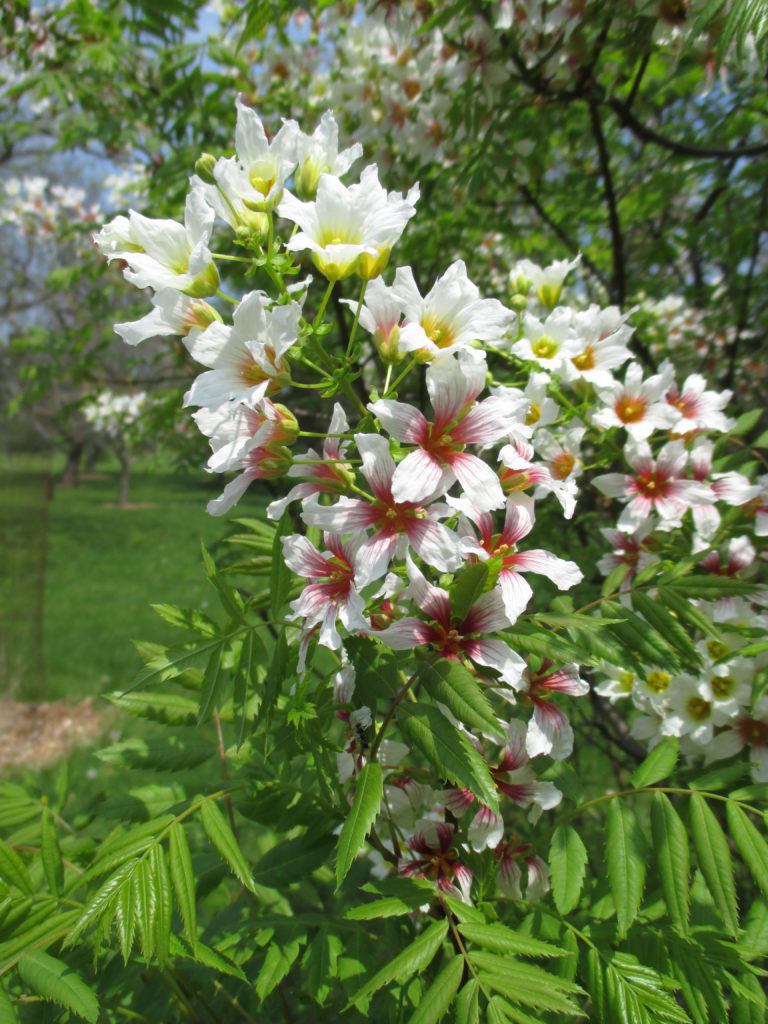
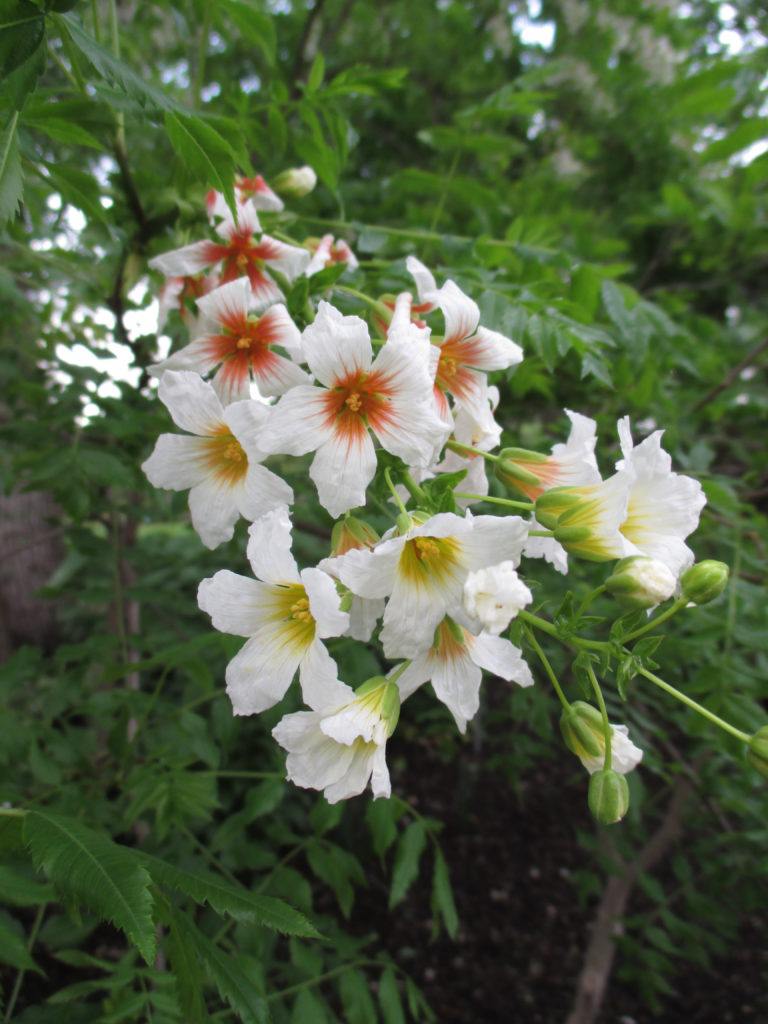
the yellowhorn (Xanthoceras sorbifolium) seen above and all the photos below is in part shade at Rotary Botanical Gardens (Janesville, Wisconsin, USA)
